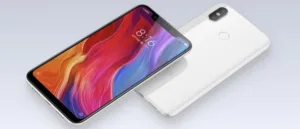The region’s smartphone market showed some stability in the first quarter of 2018 in unit terms, while its value grew to exceed its previous first quarter peak result in the first quarter of 2015, according to IDC. The total value of smartphone sales was $29.967 billion and unit volume was 86.523 million. Program director Simon Baker commented:
“Overall mobile phone shipments in EMEA declined year-on-year in unit terms and it may well be that the market is beyond the peak levels registered in 2017.
This is because the resurgence in feature phones in emerging markets seen from the second half of 2016, is now beginning to ebb. In the first quarter of 2018, the feature phone market was the smallest it has been in six quarters”.
The Western European and African smartphone markets continue to contract. The Western European smartphone total dropped to 29.213 million in the quarter, 8.2% down on the year before, while Africa’s was down 4.4%. In comparison, the Middle East market was 1.5% up and the market in Central Europe was up 5.6%.
Samsung is maintaining its smartphone market leadership across all of EMEA, though it has a smaller share in Africa than elsewhere. Senior analyst Marta Pinto said:
“Sa
msung has a very stable position in Western Europe and with its wide product portfolio, it has adjusted to the new realities of the market. Sales of premium smartphones are growing and Samsung does the premium model marketing exercise better than most, but consumers are still showing more of a value-for-money approach than they did. While they want premium models more than they used to, they are often happy to settle for last year’s version rather than the latest”.
Meanwhile, second-placed Huawei is gaining in Europe and rising strongly in the Middle East. Both vendors are looking over their shoulders at how quickly Xiaomi will become a serious new rival. Baker continued:
“Huawei’s volumes have gone up by a half in the last year and most rapidly in CEE and the Middle East. The vendor must be considered a strong rival to Samsung and Samsung must look out, especially in the more profitable European market.
All eyes are on Xiaomi in the mobile phone industry as it prepares for an IPO. Having succeeded stunningly well in India, Xiaomi last year focused on Russia as a key element in the next stage in its global expansion — and to a lesser extent, Ukraine and Poland — and it continues to do well there. Its share in CEE has subsequently flattened, suggesting further growth may be more difficult. Now it is moving into Western Europe”.
Xiaomi’s Mi 8 smartphone released this month.
Pinto also said:
“Xiaomi’s expansion has largely been in markets with open distribution and its approach often involves opening own-brand shops. It is not used to focusing on operator relationships and some of the European telcos have been wary of doing deals with Xiaomi.
However, it has announced a partnership with UK-based European operator 3 and we now expect it to pursue all channel opportunities as it ramps up its push into Western Europe”.
IDC predicts that the smartphone market will approach 370 million smartphones in EMEA in 2018, a forecast volume which has been trimmed modestly against the previous forecast a quarter ago. However, the smartphone value forecast has increased to $120 billion — a recovery to the highest level in the region, back in 2015. Pinto concluded:
“There will be many new models incorporating wider screens which will help boost the market. The number of smartphones with bezel-less screens will also rise and we expect this to promote a replacement cycle”.

